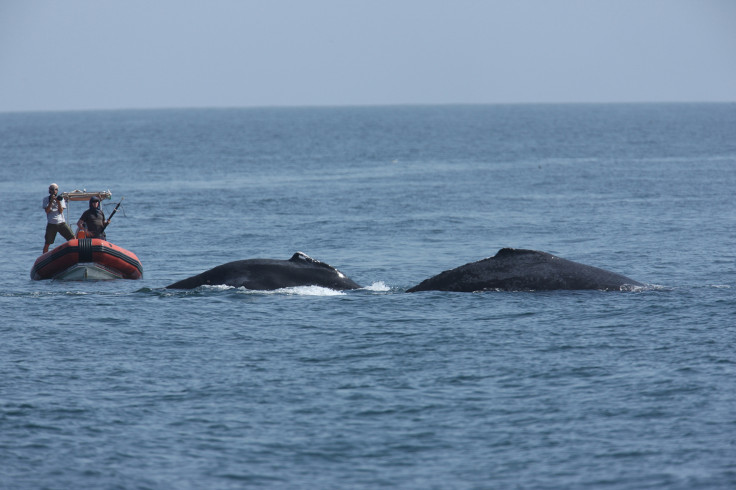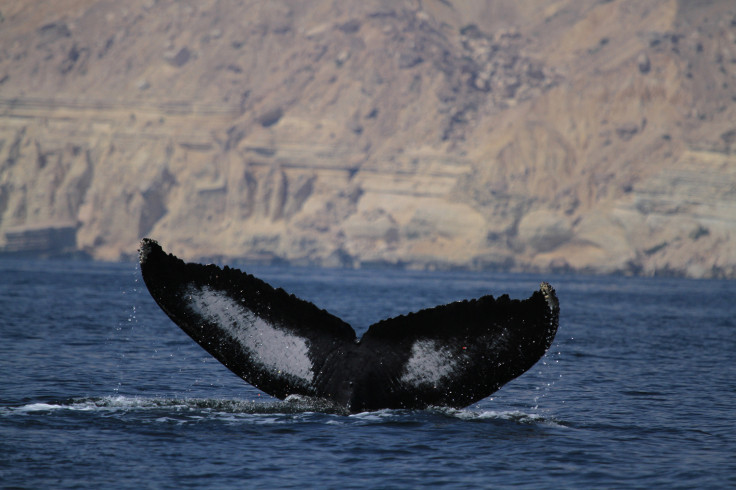Largest genetic study of humpback whales shows dire situation for giants in Arabian Sea
Looking at the genome of over 3,000 humpback whales, scientists have been able to pinpoint conservation priorities.
One of the largest genetic studies ever conducted on humpback whales has been published to help scientists come up with better conservation strategies for these large marine mammals. Although most populations are today recovering, the scientists show that the Arabian humpback whale is in urgent need of protection.
The humpback whale is a large sea mammal that can reach 12 to 16 metres long and weight more than 30,000 kg. The species is found in all of the major oceans and all whales, except the subpopulation that live in the Arabian Sea, undertake long migrations throughout the year. They swim between breeding grounds in tropical coastal waters in winter to feeding grounds in middle and high latitudes.
Five decades ago humpback whales were threatened by commercial whaling, which seriously depleted the populations. However, since receiving international protection against whaling in 1966, few humpback whales have been caught. Pollution, collision with fishing ships and entanglements in fishing gear can be fatal, but the species seemed to be showing important resilience and to have bounced back in the last 50 years.
To confirm this, identify the humpback whales that remain at risk, and refine conservation strategies, scientists from WCS (Wildlife Conservation Society), the American Museum of Natural History, Columbia University, and other organisations have conducted the large genetic research now published in the journal Molecular Ecology.
Marine mammal conservation
There are a number of challenges standing in the way of marine mammal conservation, especially large migratory mammals like humpback whales. Finding a way to follow all whales across their full range and monitor their movements during their long journeys can be difficult.
Modern techniques such as remote sensing devices placed on individual whales or photo-recognition of individuals can help but there is a need to conduct molecular and genetic research to better understand how a species fare. Humpback whale populations display complex genetic structures which make this work even harder.

In this study, the scientists collected skin samples from 3,188 individual humpback whales from 12 different locations in the South Atlantic and Indian Oceans. They analysed the corresponding genomes using a technique called polymerase chain reaction – the idea is to statistically measure gene flow between different populations of whales.
They discovered information about the genetic connections between different groups of humpback whales. For instance, the whales near South Africa and the ones near East Africa have more ties than previously believed. This means that individuals males likely move between populations in the different ocean basins around the world to mate with females.

The most relevant finding for conservation is the fact that the Arabian Sea humpback whale is highly genetically differentiated. While the other humpback whale populations are slowly recovering, this group is the smallest and most isolated in the world, with less than 200 individuals remaining. Arabian Sea humpback whales were thus recently listed as "endangered" under the US Endangered Species Act . Their unique genetic nature confirmed by this study makes it all the more urgent to protect it.
Dr Howard Rosenbaum of WCS's Ocean Giants Program concluded: "After 50 years of international protection, a number of humpback whale populations are beginning to recover in the Southern Hemisphere and other regions. Refining our understanding of these populations will help us determine protection measures for these great whales as they face new threats while recovering from an extended period of previous whaling."
© Copyright IBTimes 2025. All rights reserved.






















